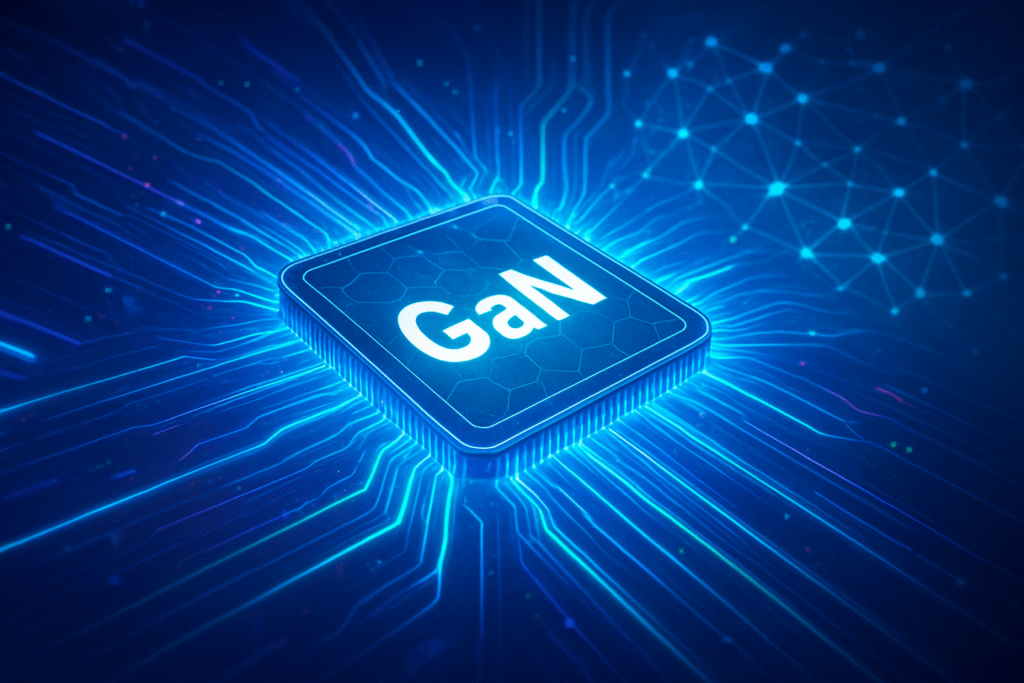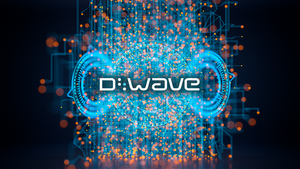
In a pivotal shift for the semiconductor industry, Navitas Semiconductor (NASDAQ: NVTS) is leading the charge with its groundbreaking Gallium Nitride (GaN) technology, revolutionizing power electronics and laying a critical foundation for the exponential growth of Artificial Intelligence (AI) and other advanced tech sectors. By enabling unprecedented levels of efficiency, power density, and miniaturization, Navitas's GaN solutions are not merely incremental improvements but fundamental enablers for the next generation of computing, from colossal AI data centers to ubiquitous edge AI devices. This technological leap promises to reshape how power is delivered, consumed, and managed across the digital landscape, directly addressing some of AI's most pressing challenges.
The GaNFast Advantage: Powering AI's Demands with Unrivaled Efficiency
Advantage: Powering AI's Demands with Unrivaled Efficiency
Navitas Semiconductor's leadership stems from its innovative approach to GaN integrated circuits (ICs), particularly through its proprietary GaNFast and GaNSense
and GaNSense technologies. Unlike traditional silicon-based power devices, Navitas's GaN ICs integrate the GaN power FET with essential drive, control, sensing, and protection circuitry onto a single chip. This integration allows for switching speeds up to 100 times faster than conventional silicon, drastically reducing switching losses and enabling significantly higher switching frequencies. The result is power electronics that are not only up to three times faster in charging capabilities but also half the size and weight, while offering substantial energy savings.
technologies. Unlike traditional silicon-based power devices, Navitas's GaN ICs integrate the GaN power FET with essential drive, control, sensing, and protection circuitry onto a single chip. This integration allows for switching speeds up to 100 times faster than conventional silicon, drastically reducing switching losses and enabling significantly higher switching frequencies. The result is power electronics that are not only up to three times faster in charging capabilities but also half the size and weight, while offering substantial energy savings.
The company's fourth-generation (4G) GaN technology boasts an industry-first 20-year warranty on its GaNFast power ICs, underscoring their commitment to reliability and robustness. This level of performance and durability is crucial for demanding applications like AI data centers, where uptime and efficiency are paramount. Navitas has already demonstrated significant market traction, shipping over 100 million GaN devices by 2024 and exceeding 250 million units by May 2025. This rapid adoption is further supported by strategic manufacturing partnerships, such as with Powerchip Semiconductor Manufacturing Corporation (PSMC) for 200mm GaN-on-silicon technology, ensuring scalability to meet surging demand. These advancements represent a profound departure from the limitations of silicon, offering a pathway to overcome the power and thermal bottlenecks that have historically constrained high-performance computing.
Reshaping the Competitive Landscape for AI and Tech Giants
The implications of Navitas's GaN leadership extend deeply into the competitive dynamics of AI companies, tech giants, and burgeoning startups. Companies at the forefront of AI development, particularly those designing and deploying advanced AI chips like GPUs, TPUs, and NPUs, stand to benefit immensely. The immense computational power demanded by modern AI models translates directly into escalating energy consumption and thermal management challenges in data centers. GaN's superior efficiency and power density are critical for providing the stable, high-current power delivery required by these power-hungry processors, enabling AI accelerators to operate at peak performance without succumbing to thermal throttling or excessive energy waste.
This development creates competitive advantages for major AI labs and tech companies that can swiftly integrate GaN-based power solutions into their infrastructure. By facilitating the transition to higher voltage systems (e.g., 800V DC) within data centers, GaN can significantly increase server rack power capacity and overall computing density, a crucial factor for building the multi-megawatt "AI factories" of the future. Navitas's solutions, capable of tripling power density and cutting energy losses by 30% in AI data centers, offer a strategic lever for companies looking to optimize their operational costs and environmental footprint. Furthermore, in the electric vehicle (EV) market, companies are leveraging GaN for more efficient on-board chargers and inverters, while consumer electronics brands are adopting it for faster, smaller, and lighter chargers, all contributing to a broader ecosystem where power efficiency is a key differentiator.
GaN's Broader Significance: A Cornerstone for Sustainable AI
Navitas's GaN technology is not just an incremental improvement; it's a foundational enabler shaping the broader AI landscape and addressing some of the most critical trends of our time. The energy consumption of AI data centers is projected to more than double by 2030, posing significant environmental challenges. GaN semiconductors inherently reduce energy waste, minimize heat generation, and decrease the material footprint of power systems, directly contributing to global "Net-Zero" goals and fostering a more sustainable future for AI. Navitas estimates that each GaN power IC shipped reduces CO2 emissions by over 4 kg compared to legacy silicon devices, offering a tangible pathway to mitigate AI's growing carbon footprint.
Beyond sustainability, GaN's ability to create smaller, lighter, and cooler power systems is a game-changer for miniaturization and portability. This is particularly vital for edge AI, robotics, and mobile AI platforms, where minimal power consumption and compact size are critical. Applications range from autonomous vehicles and drones to medical robots and mobile surveillance, enabling longer operation times, improved responsiveness, and new deployment possibilities in remote or constrained environments. This widespread adoption of GaN represents a significant milestone, comparable to previous breakthroughs in semiconductor technology that unlocked new eras of computing, by providing the robust, efficient power infrastructure necessary for AI to truly permeate every aspect of technology and society.
The Horizon: Expanding Applications and Addressing Future Challenges
Looking ahead, the trajectory for Navitas's GaN technology points towards continued expansion and deeper integration across various sectors. In the near term, we can expect to see further penetration into high-power AI data centers, with more widespread adoption of 800V DC architectures becoming standard. The electric vehicle market will also continue to be a significant growth area, with GaN enabling more efficient and compact power solutions for charging infrastructure and powertrain components. Consumer electronics will see increasingly smaller and more powerful fast chargers, further enhancing user experience.
Longer term, the potential applications for GaN are vast, including advanced AI accelerators that demand even higher power densities, ubiquitous edge AI deployments in smart cities and IoT devices, and sophisticated power management systems for renewable energy grids. Experts predict that the superior characteristics of GaN, and other wide bandgap materials like Silicon Carbide (SiC), will continue to displace silicon in high-power, high-frequency applications. However, challenges remain, including further cost reduction to accelerate mass-market adoption in certain segments, continued scaling of manufacturing capabilities, and the need for ongoing research into even higher levels of integration and performance. As AI models grow in complexity and demand, the innovation in power electronics driven by companies like Navitas will be paramount.
A New Era of Power for AI
Navitas Semiconductor's leadership in Gallium Nitride technology marks a profound turning point in the evolution of power electronics, with immediate and far-reaching implications for the artificial intelligence industry. The ability of GaNFast ICs to deliver unparalleled efficiency, power density, and miniaturization directly addresses the escalating energy demands and thermal challenges inherent in advanced AI computing. Navitas (NASDAQ: NVTS), through its innovative GaN solutions, is not just optimizing existing systems but is actively enabling new architectures and applications, from the "AI factories" that power the cloud to the portable intelligence at the edge.
ICs to deliver unparalleled efficiency, power density, and miniaturization directly addresses the escalating energy demands and thermal challenges inherent in advanced AI computing. Navitas (NASDAQ: NVTS), through its innovative GaN solutions, is not just optimizing existing systems but is actively enabling new architectures and applications, from the "AI factories" that power the cloud to the portable intelligence at the edge.
This development is more than a technical achievement; it's a foundational shift that promises to make AI more powerful, more sustainable, and more pervasive. By significantly reducing energy waste and carbon emissions, GaN technology aligns perfectly with global environmental goals, making the rapid expansion of AI a more responsible endeavor. As we move forward, the integration of GaN into every facet of power delivery will be a critical factor to watch. The coming weeks and months will likely bring further announcements of new products, expanded partnerships, and increased market penetration, solidifying GaN's role as an indispensable component in the ongoing AI revolution.
This content is intended for informational purposes only and represents analysis of current AI developments.
TokenRing AI delivers enterprise-grade solutions for multi-agent AI workflow orchestration, AI-powered development tools, and seamless remote collaboration platforms.
For more information, visit https://www.tokenring.ai/.






